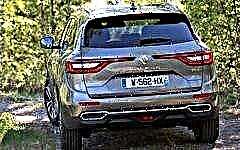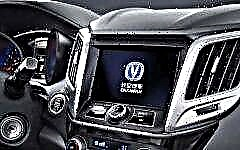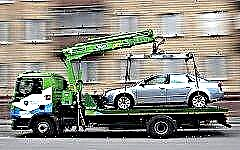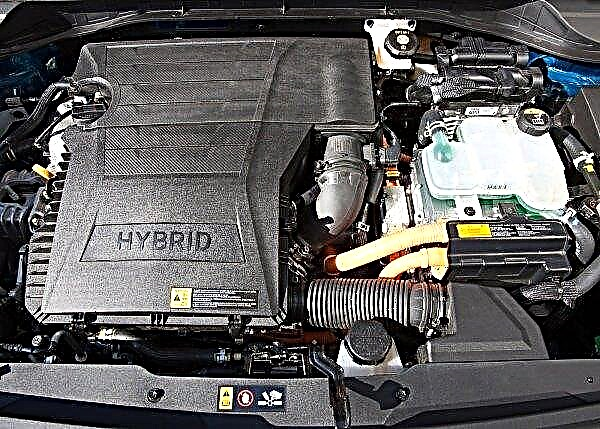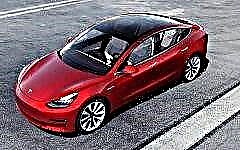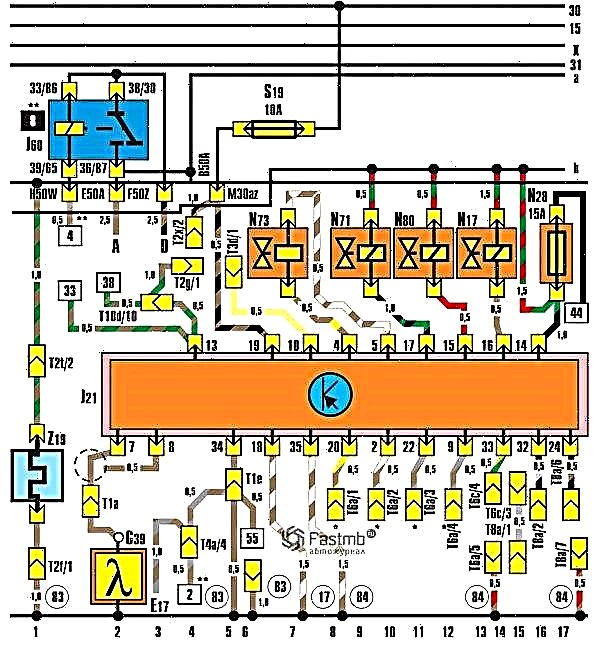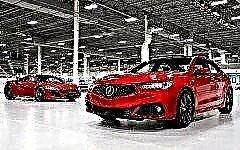

The content of the article:
- Crosley 1A (1939)
- Faure PFA (1940) and Peugeot VLV (1941)
- ALCA Volpe (1947)
- Lloyd LP300 (1950)
- Kleinschnittger F125 (1950)
- Hoffman (1951)
- Messerschmitt KR175 / 200 (1953) and Heinkel Kabine (1956)
- Zundapp Janus (1956)
- Allard Clipper (1953)
- SMZ-S-3A (1958)
Every year, motorists around the world follow a variety of auto shows, exhibitions, presentations to see the most unique, fastest, most expensive cars from around the world. There are instances that are truly extraordinary, there are breathtaking ones, and there are simply funny ones.
1. Crosley 1A (1939)

The popularity of this kid is amazing, if only because Americans never, even in their worst times, drove small cars. It is still not clear how and why a businessman with a million dollar fortune, designer Powell Crosley decided to compete with the Buicks and Chryslers.
He presented his first model back in 1939, but it went unnoticed by the general public. After the war, the car acquired a new body, which made it famous.
By the way, despite the attitude to the category of subcompact cars, "Crosley" was American-style big. So, its length exceeded 3 meters, for which the manufacturer wanted a very high price in comparison with European "goods". The body was made from a sheet of solid metal, side steps were not in the fashion of the time, and the 4-cylinder engine made it quite a serious vehicle. But it became the first in the world to have disc brakes on all wheels.
By 1948, the inventor could boast of almost 30 thousand cars sold, the bodies of which were presented in the following variations: station wagon, sedan, convertible and a very funny SUV. But when the first craze for cute crumbs passed, Americans returned to the traditional, proven, low-budget Detroit Big Three: Chrysler, Ford and General Motors.
2. Faure PFA (1940) and Peugeot VLV (1941)

If in the first case the car appeared at the whim of a rich bored person, then these little "Frenchmen" - under the pressure of circumstances.
Their birth fell on the years of World War II, when all the resources of the countries participating in the battles were directed to military needs. Part of France was just occupied by the Nazis, who forbade automakers to waste precious gasoline on the production of light civilian vehicles. The French were not at a loss and quickly built electric cars.
Pierre Foret was clearly no stranger to aviation, judging by the model he created, which had an electric motor in the rear and 6 batteries in the front. The car developed a speed of 36 km / h, and the battery supply was enough for 50 km. Quite decent performance for city movement, and at the same time no violation of German rules.

Almost simultaneously with Foret, the leaders of Peugeot came to the same decision.
Their development was named Voiture Legere de Ville, which translates as “light city car”. The design of this electric car was simpler than that of a competitor, and at the same speed, the covered distance was 80 km. Unfortunately, when the production workshops have already collected almost four hundred copies, the Nazis also placed a taboo on such vehicles. Apparently, the batteries also went to the benefit of the Wehrmacht.
3. ALCA Volpe (1947)

Perhaps, of all the presented rating, this "Italian" can be called the most attractive. This makes it all the more offensive that it has remained just a development.
In the appearance of this modest representative, one can trace the responses of the sports versions of Alfa Romeo. Whether it happened by chance for the manufacturer or intentionally, but precisely because of this similarity of the little "chanterelle", as the name of the model can be translated, there was quite an active demand for it.
But the creators could not agree on the issue of equipping with a motor and find a worthy supplier. Therefore, in general, workable models did not find their "heart", and therefore did not go out on the big roads.
4. Lloyd LP300 (1950)

So many epithets were not awarded to the model of the subsidiary German company Borgward, a fairly successful manufacturer of budget compact cars. In the 50s, a very tense economic situation reigned in Germany, there were constant interruptions in steel supplies, and the need for personal transport among the population was growing.
Thus, it was necessary to create a cheap but workable car from scrap materials. They were plywood and wood, from which the light body of the Lloyd 300 was built. For greater clarity, all the outer panels were draped with leatherette or fabric.
For its good dimensions and brutal, purely German appearance, the car received the nickname "bomber."
5. Kleinschnittger F125 (1950)

Another German representative was completely collected from garbage left over from military aircraft and transport equipment.
Engineer Paul Kleinschnitger dreamed of a microcar since the 1930s, but during the war years there was no time to think about civil matters. But immediately after the onset of peace, he collected enough spare parts from abandoned equipment to make his first roadster with his own hands.
Looking at old photographs, it seems that we have a toy in front of us. However, the car was made from an aluminum body with a tubular frame, and under the hood was a 5-horsepower two-stroke engine from a motorcycle. It was set in motion by an electric starter, and the "face" was decorated with turn signals from Hella, which were quite scarce at that time.
Despite the appearance of a children's toy car, it was in demand - sales exceeded 3000 copies. In addition, neighboring countries became interested in the model, and Kleinschnitger sold the license to manufacture his invention to Holland and Belgium.
6. Hoffman (1951)

Who would have thought that such rational and conservative Germans would occupy so many lines in a row in the ranking of the funniest cars at once.
Looking at this representative, it seems that its creators were either mentally ill people or addicted to drugs. The Hoffman had an egg-shaped body on three wheels.
But it's not even a matter of appearance - with a width of 2 meters and a very compact wheelbase, it became absolutely unstable and uncontrollable on the road. But even that is not all!
The designers made only one wheel out of three controllable - the rear one. Thus, it was necessary to have the talents of an equilibrist and a stuntman at the same time in order to manage this automobile misunderstanding.
Fortunately, either it was a banal experiment, or a joke on the public, but Hoffman appeared in public in the first and only copy.
7. Messerschmitt KR175 / 200 (1953) and Heinkel Kabine (1956)

Bearing the formidable name of a military fighter plane, the car owes its appearance to Fend Flitzer. A former Luftwaffe technician has already constructed a motorized wheelchair. After the success of the project, he came up with the idea of a microcar, with which he went to the Messerschmidt aviation concern, which at that time lost the right to manufacture aircraft.
Thus was born the "scooter with a body", also called "bubble car", with a 175 cc 1-cylinder two-stroke engine, a 4-speed gearbox without reverse speed and a folding hood instead of a door, imitating an aircraft design.
Since Messerschmidt was a company with a name, reputation and proper experience, the model turned out to be very reliable, high-quality and economical, which immediately gained her popularity among the people.

The competitor of this instance - "Henkel" was released a little later.It had more harmonious proportions, a traditional door, albeit a single one, and a reverse gear. A similar 1-cylinder, 4-stroke engine was the company's own development and with its ten horsepower produced a speed of 90 km / h.
A huge advantage over the compatriot was the relative quietness of the car and the absence of the unpleasant smell of burning oil while the engine was running.
Although both models of the aviation giants were successful, the difficult times in Europe ended quickly enough. Other automakers were already increasing their momentum, and the glory of "bubble cars" faded as quickly as it flared up.
8. Zundapp Janus (1956)

And again, the German designers are surprised, now with a cartoon character.
Now this machine is the star of the cartoon "Cars-2", and back in 1956 it became an experimental creation of an aviation company.
Although the product bears the name of the motorcycle company Zundapp, the idea and development belongs to the Dornier company. It's just that the management wisely approached the question - since there are no skills in the automotive industry, there is nothing to spoil a good thing for.
And the thing turned out to be really good and interesting, which was even ranked as a deluxe class. The car had a 4-seater salon with an unusual arrangement of doors - front and rear. The driver and his passengers were located with their backs to each other. The technical part of the model was also unique: McPherson struts, which ensure smooth running and a hydraulic brake on all wheels. With an overall cute appearance, all this made the car truly extraordinary.
Unfortunately, engineers and designers have overdone it. For the budget segment of bubble cars, the model turned out to be too technical, and therefore expensive. But it did not reach the title of "passenger" car due to the excessive modesty of design and internal content. So she stayed somewhere in between, not finding her buyer.
9. Allard Clipper (1953)

This specimen could well have a bright future, because he was born not in the hands of an insane experimenter, but in a decent, well-known company. Allard's racing models had already won sporting events, including the 1952 Monte Carlo Rally, but times were tough in the UK and it was necessary to think about cutting production costs. Therefore, a year later the first Clipper appeared from the production shops.
The model with fiberglass body, motorcycle 2-stroke engine, chain drive and 2 + 2 seats was positioned as unique and durable. However, there was no response to the catchy advertisement, the manufacturer managed to sell only 50 copies.
10.SMZ-S-3A (1958)

Who does not remember the moment in "Operation Y", when Coward, Goonies and Experienced lightly raise and rearrange the car?
The Soviet Union at that time tried to keep up with progressive Europe and also started developing compact cars. This model can be called the brainchild of the no less famous 3-wheeled "invalid" SMZ-S-1L, produced by the Serpukhov plant. Its 4-wheeled version, which became the main character of the popular comedy, outwardly resembled the No. 1 competitor of this rating - the Crosley car.
Unfortunately, the SMZ-3D has replaced the pop-eyed charm that has stood on the assembly line for 12 years. The comrade did not evoke not only emotion, but even pity. The monstrous design was justified only by a closed body, which turned out to be too little for popular love.

